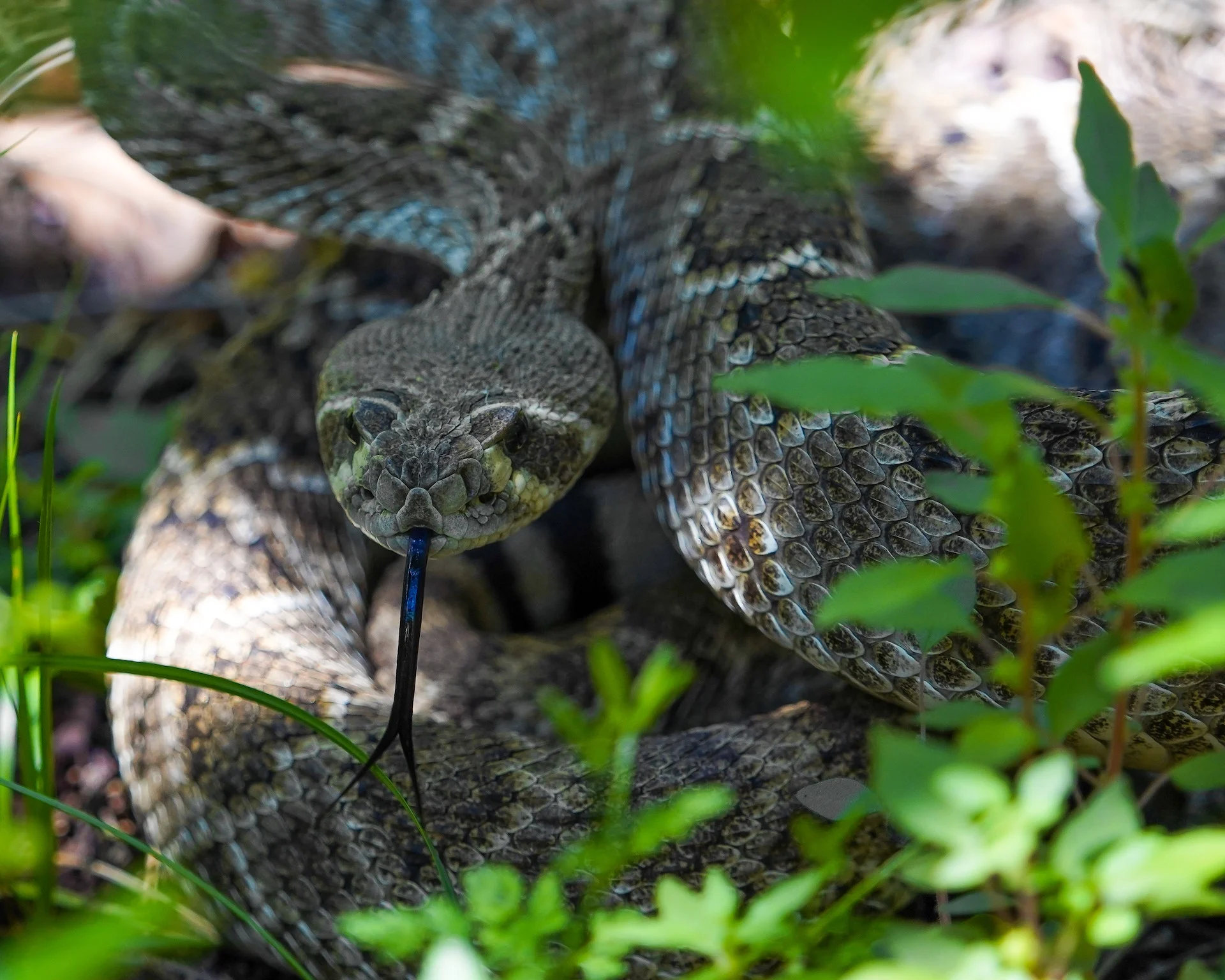
Searching for Snake Removal Atlanta GA? Perimeter Wildlife Control offers snake removal and snake control services in Atlanta, Georgia.
SNAKES: North America is home to many snake species, about 130. Most are harmless. There are 20 venomous species of snake, most of them rattlesnakes. The exceptions are the aquatic snakes, such as the Copperhead and the Cottonmouth, and the Coral Snakes (the red-yellow-black ones). If you are unsure of the specie of snake, just leave it alone! In fact, leave all snakes alone. They get a bad rap. If one gets in your house or pool or something, a wildlife specialist can come and remove it, but otherwise, it’s probably not bad to have around, so leave it be.
Snakes of Georgia:
Simply hearing the word snake sends shivers up most folk’s spine. However, snakes are an important component of our ecosystem in Georgia because of their major role as both a predator and prey. Snakes are environmentally beneficial because they eat rats, mice, and other animals deemed to be pests. Some snakes have been used as bio-indicators to assess pollutants in terrestrial or aquatic ecosystems.
Unfortunately, many species of snakes are declining as a result of human activities. Thankfully, of the 41 snake species that occur in Georgia, only one is considered legally threatened, the eastern indigo snake.
Non-Venomous Snakes in Georgia
- Eastern Green Water Snake
- Brown Water Snake
- Red or Yellow-Bellied Water Snake
- Banded Water Snake
- Northern Water Snake
- Banded Water Snake
- Striped Crayfish Snake
- Eastern Hognose Snake
- Southern Hognose Snake
- Ringneck Snake
- Eastern Worm Snake
- Pine Woods Snake
- Mud Snake
- Rainbow Snake
- Racer
- Coachwhip
- Rough Green Snake
- Corn Snake
- Rat Snake
- Pine Snake
- Eastern/Black Kingsnake
- Mole Kingsnake
- Scarlet Kingsnake/Milk Snake
- Glossy Crayfish Snake
- Black Swamp Snake
- Brown Snake
- Red-Bellied Snake
- Eastern Ribbon Snake
- Common Garter Snake
- Smooth Earth Snake
- Rough Earth Snake
Venomous Snakes in Georgia
- Copperhead
- Pigmy Rattlesnake
- Canebrake or Timber Rattlesnake
- Cottonmouth
- Eastern Diamondback Rattlesnake
- Eastern Coral Snake
Biology of Snakes
Snakes are reptiles characterized by elongated bodies and a lack of limbs. Snakes are closely related to lizards, but do not have external ears or eyelids. The skin of snakes is dry and scaly, not slimy like some people believe. Snakes have a forked tongue used to “sample” microscopic particles from the air. The particles are transferred to the Jacobson’s organ to taste the air to figure out its surroundings. Snakes are “cold-blooded” meaning they rely on their surroundings for body heat. As a result, snakes cannot tolerate extreme temperatures. Therefore, when it is cold or extremely hot outside, snakes are relatively inactive. It is common for a snake to raise its body temperature by “sunning” in the middle of a sidewalk or driveway, or cool its body temperature by laying under landscape materials or in bushes & shrubs.
Living With Snakes
Snakes can be found in most backyards, parks, and woodlands throughout Georgia. Many species are secretive, spending most of their time underground or under cover. Active gardeners may occasionally see small ringneck, worm, red-bellied, brown, earth, and crowned snakes. None of these species are much bigger than a large earthworm and do not bite. Several larger snake species also frequent backyards, especially corn and rat snakes, as well as racers. These larger snakes will eat mice, rats, and occasionally birds and their eggs. Snakes often take refuge in piles of brush or firewood. Water snakes, especially banded water snakes, are occasionally found in areas bordering streams, swamps, or farm ponds.
Occasionally, snakes searching for rodents or eggs will take refuge in barns, crawl spaces underneath homes, or sometimes in a home or attic. The best way to keep snakes from entering your home or other building is to prevent snake food (rodents) from entering your home. Closing up all possible entrance locations is a must. Next, a rodent control program should be put in place to eliminate the food attraction for snakes.
Follow Us on Facebook!
